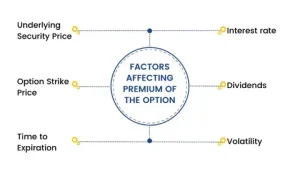In today’s crowded digital landscape, influencer marketing has become a vital tool for brands to reach targeted audiences with authenticity. A social media management agency can play a pivotal role in building and sustaining influencer partnerships that go beyond paid shout-outs to foster genuine brand advocacy. Here’s how these agencies can develop impactful influencer collaborations while ensuring alignment with brand values and audience expectations.
Identifying the Right Influencers for Authenticity
To establish genuine connections, the first step is selecting influencers whose values, tone, and audience closely mirror the brand’s identity. Instead of prioritizing follower count, agencies should focus on micro and nano influencers with engaged communities.
For example, a skincare brand targeting eco-conscious millennials might work with a wellness blogger who emphasizes sustainable living, even if they have just 10K followers. Their content likely resonates more deeply and authentically than a celebrity endorsement.
Execution Steps:
- Conduct an audience analysis to understand demographics and interests.
- Use influencer discovery platforms (e.g., Upfluence, Aspire) to filter by niche, engagement, and sentiment.
- Vet potential influencers by reviewing their content, tone, audience comments, and past partnerships.
- Shortlist influencers and initiate value-based conversations, not just transactional pitches.
Crafting a Value-Aligned Collaboration Strategy
Authentic influencer partnerships thrive when both parties see the relationship as mutually beneficial and mission-driven. Agencies should work with influencers to co-create content that reflects shared values and tells a story, not just sells a product.
For instance, a fitness brand might collaborate with a trainer to develop a “30-day challenge” instead of a one-off product post. The influencer’s journey becomes the content, and the product supports the story naturally.
Execution Steps:
- Involve influencers in brainstorming to encourage ownership.
- Build campaigns around themes (e.g., wellness month, back-to-school tips) to integrate the product organically.
- Encourage transparency (e.g., use of #sponsored, behind-the-scenes clips) to reinforce authenticity.
- Let influencers present products in their own voice and style.
Focusing on Long-Term Relationships Over One-Off Campaigns
While one-time promotions may yield quick wins, long-term partnerships build trust with audiences over time. Consistent collaboration helps influencers naturally integrate the brand into their content, making endorsements more believable.
An excellent example is the fashion brand Revolve’s ongoing partnership with influencers who travel and attend events exclusively with the brand. Their consistent appearance with Revolve strengthens brand association and credibility.
Execution Steps:
- Onboard influencers with brand training and insider access.
- Provide quarterly creative briefs to align messaging while allowing creative freedom.
- Offer affiliate programs or performance-based bonuses to maintain engagement.
- Reevaluate partnerships based on performance and audience feedback every few months.
Leveraging User-Generated Content (UGC) to Boost Credibility
UGC from influencers reinforces authenticity because it showcases real-world usage. Rather than staging product demos, agencies should encourage influencers to capture how they genuinely incorporate products into their lives.
For example, a food brand might encourage influencers to share spontaneous cooking reels with the product rather than high-gloss sponsored photos. This unfiltered content tends to resonate better with followers.
Execution Steps:
- Clearly brief influencers on capturing candid, lifestyle content.
- Create dedicated hashtags or challenges to source UGC.
- Repurpose influencer content (with permission) across brand channels to amplify reach.
- Monitor and respond to comments to nurture community trust.
Integrating Influencer Voices into Brand Campaigns
To deepen influencer-brand alignment, agencies can incorporate influencers into broader marketing initiatives such as product launches, webinars, or even co-branded products. This positions influencers as collaborators rather than promotional tools.
For example, beauty brand Morphe often releases co-branded makeup palettes with influencers, giving them creative input. This generates anticipation and community buzz while strengthening loyalty.
Execution Steps:
- Identify high-performing influencer partners who align with the campaign’s vision.
- Invite them into the planning process early—ideally during product R&D.
- Offer exclusivity (e.g., first access or named collections) to increase excitement.
- Use cross-platform promotions to drive results (e.g., Instagram, YouTube, TikTok).
Measuring Success Beyond Vanity Metrics
To evaluate the effectiveness of influencer partnerships, agencies should go beyond likes and impressions. Instead, track KPIs such as engagement rate, story completion, referral traffic, and brand sentiment in comments.
For instance, if an influencer’s post drives discussion in the comments or spikes branded search traffic, it’s an indicator of meaningful impact. Qualitative insights often reveal more than surface-level numbers.
Execution Steps:
- Set clear campaign goals (e.g., email signups, product trials, awareness).
- Use UTM tracking and promo codes to attribute conversions.
- Conduct sentiment analysis on influencer content and audience response.
- Report findings with context, focusing on brand perception and customer journey influence.
Ensuring FTC Compliance and Transparency
To maintain credibility and comply with regulations, influencer partnerships must be transparent. Agencies should ensure influencers disclose sponsored content clearly, using appropriate tags and disclosures.
Failure to do so can damage both the brand and influencer’s reputation. For example, several fashion influencers were fined for not disclosing paid promotions, resulting in lost trust and audience backlash.
Execution Steps:
- Educate influencers on FTC guidelines and provide examples of proper disclosures.
- Require contract clauses that mandate transparency.
- Review and approve content before posting when possible.
- Audit influencer activity regularly to ensure ongoing compliance.
Final Thoughts
Building authentic influencer partnerships takes intention, collaboration, and strategy. A social media management service company that emphasizes value alignment, long-term engagement, and transparency can create influencer campaigns that not only reach audiences—but also earn their trust. With the right approach, brands can foster advocacy that feels real, relevant, and lasting.





